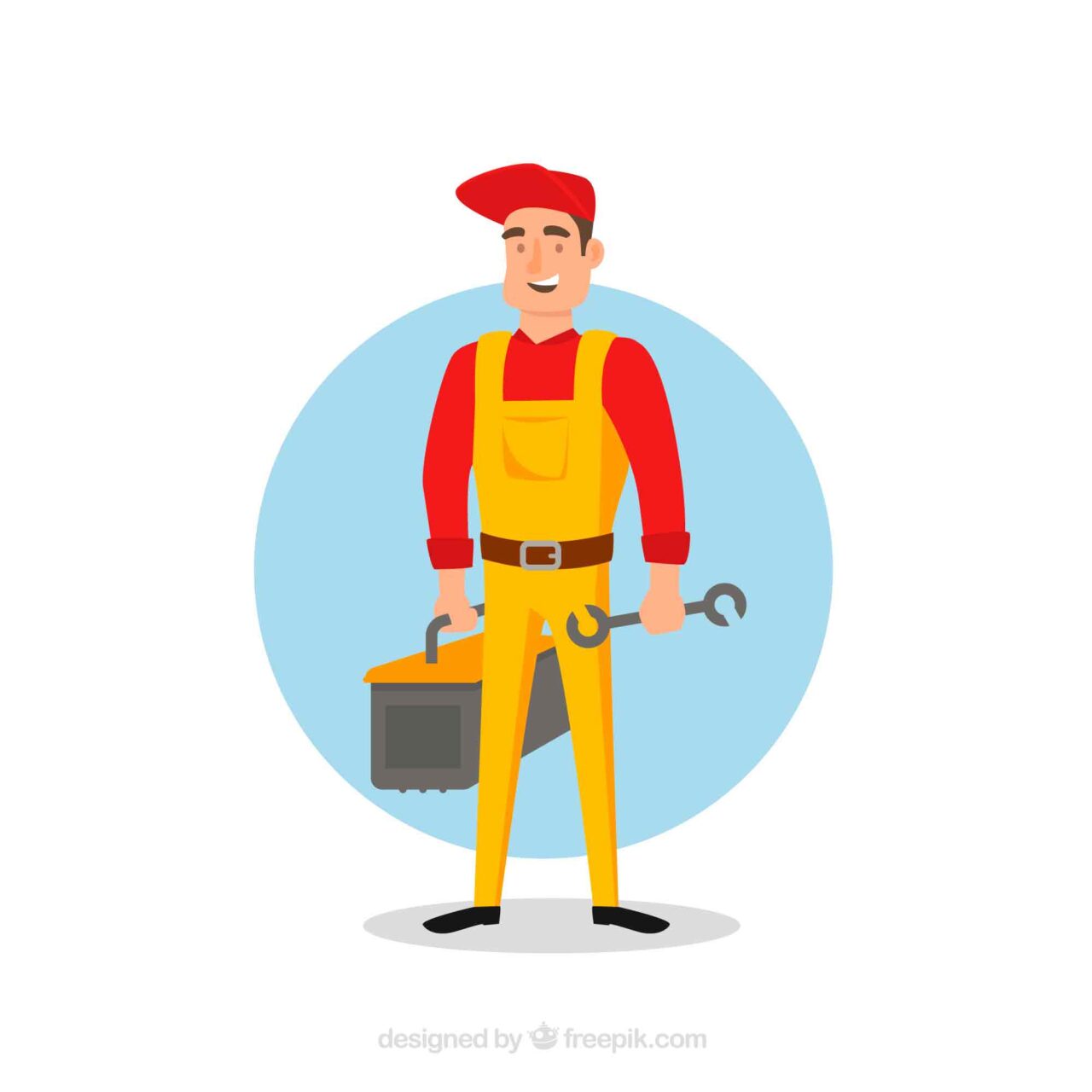Fitting is a skilled trade that applies in various industries, from automobiles and aircraft to manufacturing and mining. The role of a fitter involves fabricating, fitting, and assembling the structural components that make up mechanical systems. Additionally, fitters are responsible for machinery repair and maintenance. In this comprehensive guide, we will delve deep into the world of fitting, exploring the key requirements, duties, responsibilities, and skills that define the role of a fitter.
The Role of a Fitter
- Fitters frequently serve as the uncelebrated champions in industries dependent on machinery and mechanical systems. They perform an essential function in guaranteeing these systems’ smooth and effective operation. Here are several pivotal facets of a fitter’s responsibilities:
- Blueprint Analysis: A core responsibility of a fitter involves scrutinizing mechanical system blueprints. These blueprints furnish meticulous instructions regarding the components to be fabricated. Precision is critical during this stage, as inaccuracies may result in expensive setbacks and operational issues.
- Fabrication: The fitter moves to the fabrication phase once the specifications are clear. This involves crafting structural components from raw materials. The choice of materials, precision in cutting, and attention to detail are vital in ensuring the components meet the required standards.
- Welding: Welding is a core skill for many fitters, especially in industries like manufacturing and aircraft. Structural components often need to be fused securely, and welding is the method of choice. Fitters must use welding equipment to achieve strong and reliable joints.
- Inspection and Quality Control: After components are fabricated and welded, they must undergo rigorous inspection. Fitters ensure the components are the correct size and meet all quality standards. This step is critical in maintaining safety and performance.
- Cutting and Shaping: Fitters use tools, including shears, power saws, cutting torches, and chipper knives, to cut and shape structural components as needed. Precision in cutting is vital to ensure that components fit together seamlessly.
- Maintenance and Repair: Fitters are not just involved in creating new components; they are also responsible for maintaining and repairing existing machinery and systems. This includes conducting regular maintenance based on a predefined schedule and diagnosing and fixing malfunctioning systems.
- Safety Compliance: Safety is a top priority in industries where fitters work. They must adhere to all workplace safety rules and regulations, using appropriate protective gear and ensuring their work does not pose risks to themselves or others.
Becoming a Fitter: Requirements and Skills
Certain requirements and skills are essential to excel in the role of a fitter.
Experience: Proven experience working as a fitter is highly valuable. It provides practical knowledge and expertise that can only sometimes be acquired through formal education alone.
Knowledge of Building Codes: Fitters should have sound knowledge of local and state building codes relevant to their industry. Adhering to these codes is crucial to ensure the safety and compliance of the work.
Tool Proficiency: Fitters work with various hand and power tools. Proficiency in using these tools is a fundamental skill.
Blueprint Interpretation: The ability to interpret complex blueprints for mechanical systems is essential. This skill ensures that components are constructed accurately to specifications.
Concentration: Fitting often involves long hours of focused work. Fitters must maintain prolonged concentration and unwavering attention to detail.
Analytical and Problem-Solving Abilities: Fitters necessitate robust analytical and problem-solving proficiencies, particularly when diagnosing system malfunctions. Pinpointing the underlying source of a problem and devising efficient remedies constitute essential facets of their role.
Communication and Organizational Skills: Proficiency in communication, adept time management, and precise organizational capabilities are indispensable, particularly when engaged in extensive projects or collaborating within a fitter team.
Welding and Mechanical Skills: Having exceptional welding skills is a significant advantage in industries requiring welding. Proficiency in various mechanical systems and components is also crucial.
The Fitter’s Impact on Industries
Fitters may not always be in the spotlight, but their work profoundly impacts various industries. Here’s how fitters contribute to some of these sectors:
- Automotive Industry: In the automotive industry, fitters assemble the intricate components of a vehicle. Their tasks guarantee vehicles’ smooth and secure operation, from the engine to the chassis.
- Aviation Sector: Within the aviation industry, fitters are pivotal in upholding the safety of passengers and crew members. Their duties encompass the assembly and upkeep of aircraft components, with a steadfast commitment to ensuring the impeccable functionality of every individual part.
- Manufacturing: Manufacturing relies heavily on fitters to create custom machinery and maintain production lines. Their work directly affects the efficiency and productivity of manufacturing processes.
- Mining: Fitters working in mining industries assemble and maintain heavy machinery used in mining operations. Their expertise helps ensure the safety and productivity of mining sites.
- Construction: In construction, fitters create and maintain structural components. This includes everything from building frameworks to installing plumbing and HVAC systems.
Challenges and Rewards of Fitting
Like any profession, fitting comes with its own set of challenges and rewards:
Challenges:
- Precision: The need for precision in fitting must be balanced. Small errors in measurements or cuts can lead to significant issues down the line.
- Physical Demands: Fitting often involves physical labor, including lifting heavy materials and working in various positions. It can be physically demanding.
- Safety Risks: Working with machinery and tools poses inherent safety risks. Fitters must always priorities safety to avoid accidents.
- Long Hours: Fitters may need to work long hours to meet project deadlines, especially in industries with high demand.
Rewards:
- Skill Mastery: Fitters have the opportunity to master a range of technical skills, from welding to blueprint interpretation.
- Job Stability: As long as industries rely on machinery and mechanical systems, skilled fitters will be in demand.
- Problem Solving: Fitters often encounter unique challenges that require creative problem-solving. Finding solutions can be intellectually rewarding.
- Contributing to Society: Fitters contribute to the functioning of critical industries, making everyday life safer and more efficient.
- Toolbox of a Fitter: Essential Instruments of the Trade The quality of a fitter’s work is intrinsically linked to the tools they employ. Below, we highlight some key tools you’ll find in a fitter’s toolbox:
- Welding Equipment: This includes welding machines, electrodes, and safety gear. Welding is a core skill for many fitters.
FAQS
What is the role of a maintenance fitter?
The role of a maintenance fitter involves ensuring the smooth operation of machinery and equipment within an industrial or manufacturing setting. Maintenance fitters are responsible for examining, fixing, and upkeeping mechanical systems. This involves identifying and resolving problems to avert breakdowns and minimize operational disruptions.
How does the role of a mechanical fitter differ from that of a maintenance fitter?
A mechanical fitter typically focuses on assembling and installing mechanical components, working on new machinery, and ensuring precise alignments according to engineering specifications. On the other hand, a maintenance fitter specializes in the ongoing care of machinery, diagnosing and repairing issues, conducting routine inspections, and ensuring equipment’s consistent functionality. While both roles require similar technical skills, their emphasis on either installation or maintenance sets them apart in their day-to-day tasks and job objectives.
What is a Mechanical Fitter?
A Mechanical Fitter is a skilled professional specializing in assembling, installing, and maintaining mechanical components and machinery. Their expertise includes reading and interpreting technical drawings, precision measurement, and various tools and equipment. Mechanical Fitters are crucial in manufacturing, construction, and engineering, ensuring that mechanical systems and equipment function efficiently and safely. They are responsible for equipment assembly, alignment, and troubleshooting, making them essential for properly operating mechanical systems in various industrial settings.


